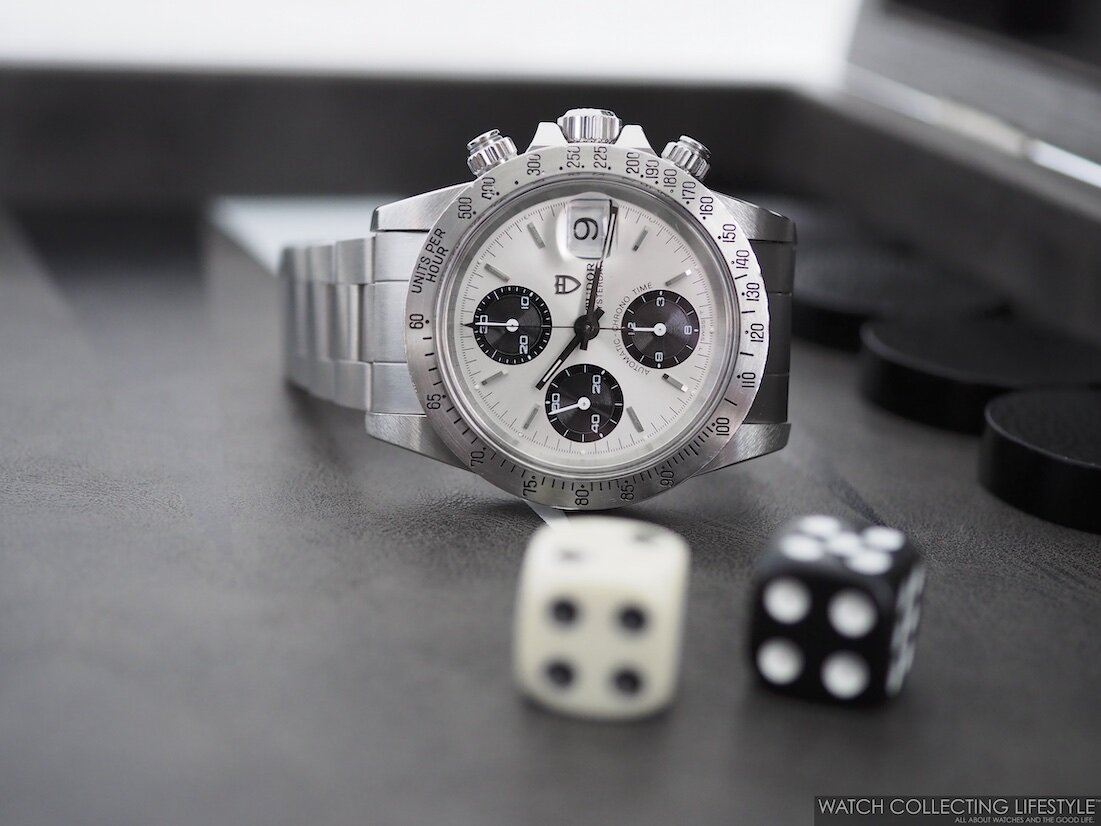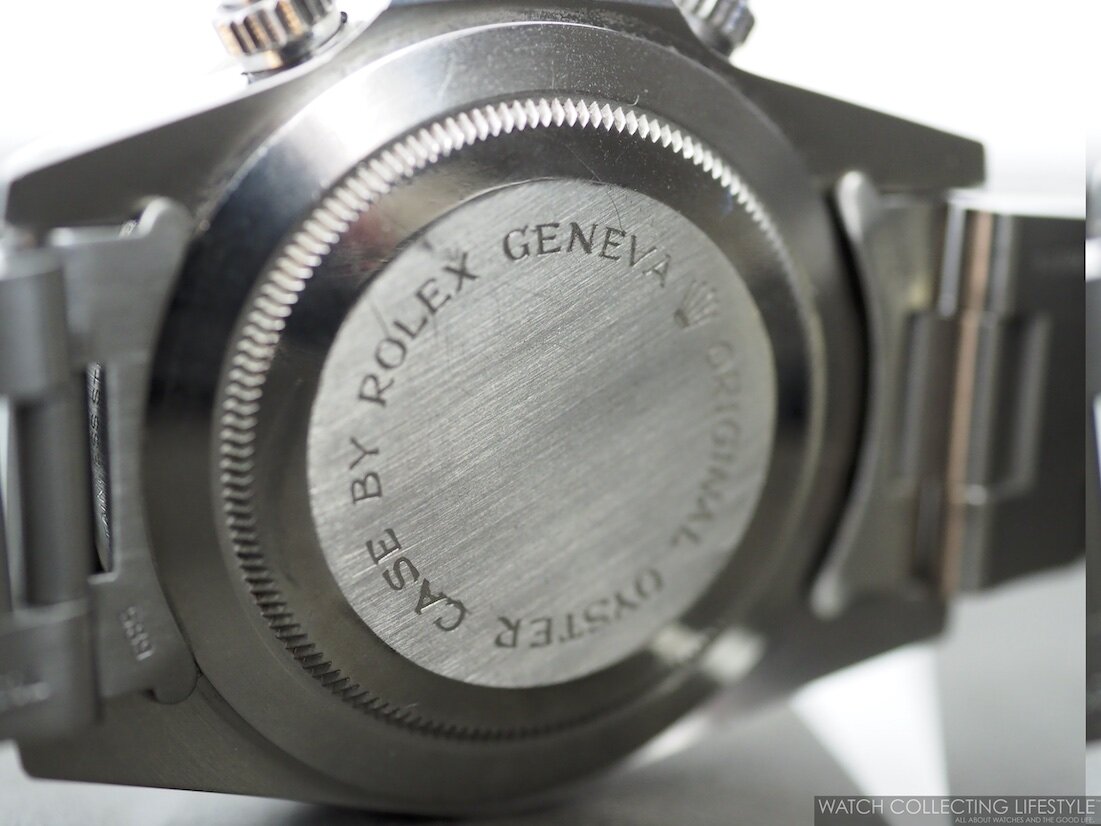For nearly half a century, Tudor has made chronographs with an unmistakable look resembling its big brother the Rolex Daytona. Released in 1976 the Tudor ‘Big Block’ chronograph is in my opinion the epitome of a vintage chronograph made to last and to look good forever. Why I think that the Tudor Big Block is a much better option than a vintage Rolex Daytona is something I will address later in this article.
The Tudor ‘Big Blocks’ are equipped with a thicker case construction and a dial bearing the words ‘Automatic - Chrono Time’. Under the hood, the ‘Big Block’ Tudor watches are powered by a self-winding movement rather than a manual wound. Therefore, the use of a thicker case was needed to accommodate the thicker movement equipped with a rotor. This is the main reason why they are nicknamed ‘Big Block’. The reference 94300 replaced reference 9420/0 and is considered a transitional reference that was later replaced by reference 79100. One great thing about reference 94300 is the use of a movement with a quick-set calendar and that’s why the dials on these watches say ‘Oyterdate’ under the Tudor logo.
When I look at the Tudor ‘Big Block’ reference 94300 I see a beefier and more practical version of a Rolex Daytona reference 6265 fitted with a date window. While both watches are relatively similar, one thing that I love about the ‘Big Block’ is the thicker and wider case construction measuring 40 mm in diameter versus only 37 mm of the Rolex Daytona 6265. Even though the bezel is very similar, I prefer the tachymetric scale on the Tudor starting at 500 and ending at 60. Somehow, the use of a bigger font and a scale that runs throughout the whole bezel makes the watch look more balanced.
Equipped with ‘millerighe’ pushers like its bigger brother the Daytona, the Big Block brings that vintage aura that is typically reserved to vintage Rolex Daytonas.
Additionally, the Tudor Big Block reference 94300 is the last series of ‘Big Blocks’ that are still fitted with a Rolex Triplock crown, a Rolex signed case with Rolex signed case back, and a Rolex Oyster bracelet 78360 with 589 end links. This particular example we have here is from circa 1988.
In 1989, reference 79100 replaced reference 94300 maintaining the same thick case construction but removing all Rolex signed components from the watch. While the dials on the new reference still bore the inscription ‘Oysterdate’ and the watch was still powered by the same Valjoux 7750 movement, there was no visible way of linking Tudor to Rolex any longer. At that time, while the code on the Oyster bracelet still showed the number ‘78360’, the clasp now had a Tudor shield instead of a Rolex crown on it. The code on the bracelet of the Tudor we have here is marked M4 with corresponds to April of 1988.
Taking into account that the ‘Big Block’ reference 94300 is equipped with basically all Rolex components—with the exception of the dial signed Tudor but most likely made by Rolex—, this watch is as much of a Rolex as a Rolex Daytona reference 6265.
I know many of you are going to call ‘sacrilege’ and call me all sorts of things but in all honesty, I don’t see much of a difference. Especially when I read the case back inscription that reads “ORIGINAL OYSTER CASE BY ROLEX GENEVA'“. If the case is made by Rolex —which includes the case back and bezel— as well as the crown, pushers, and bracelet, why would we dare to say that this watch is that far off from a Rolex?
While the Rolex Daytona reference 6265 is powered by the manual wound Valjoux 722, the Tudor ‘Big Block’ is powered by the automatic Valjoux 7750 beating at a frequency of 28,800 vph. And this right here is already enough reason for me to prefer the Tudor ‘Big Block’ over the Daytona as I hate having to manually wind watches daily. Oh and let’s not forget that having a date indicator is very important to me.
Even though I know that the Rolex Daytona is a perpetually iconic watch and I would never dare to blatantly put it down, the layout on the oyster silvered dial with black subdials—just like on the 6265—on the Tudor is something that I prefer with the chrono minutes at 12 and the chrono hours at 6 o’clock. Somehow this layout with the date aperture at 3 o’clock flows better in my opinion.
Lastly, for the price of one Rolex Daytona ref. 6265 you can buy ten Tudor ‘Big Block’ reference 94300. Of course, being this such a polarizing comparison between two brothers, we might have to agree to disagree. If you haven’t paid much attention to a vintage Tudor ‘Big Block’ maybe is time to do so as prices on them keep climbing steadily. Not a bad vintage ‘Rolex’ chronograph for the money.
Sticker Price Range USD9,500-USD 11,500 depending on the condition, correctness, and availability of boxes and papers. For more info on Tudor click here.































